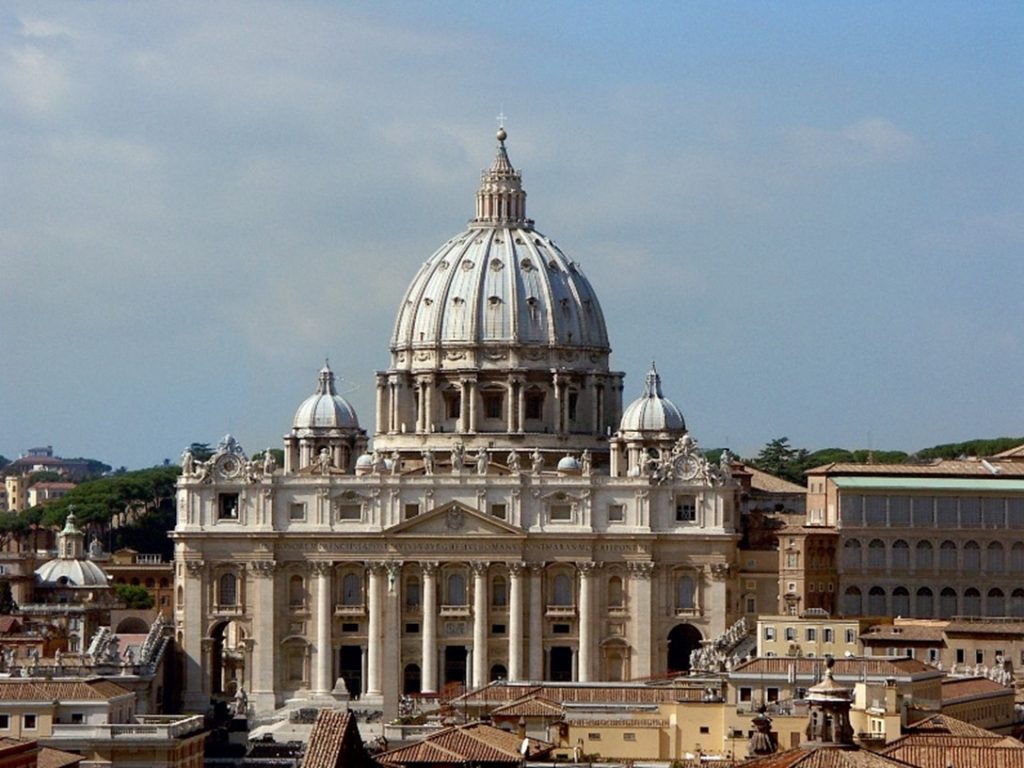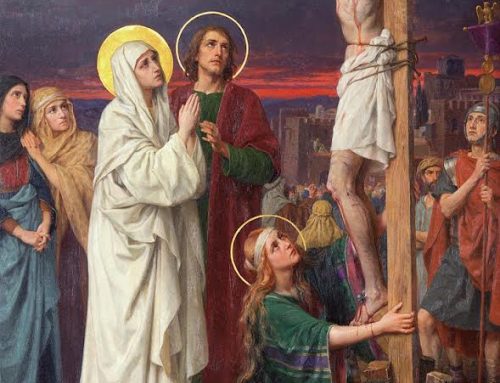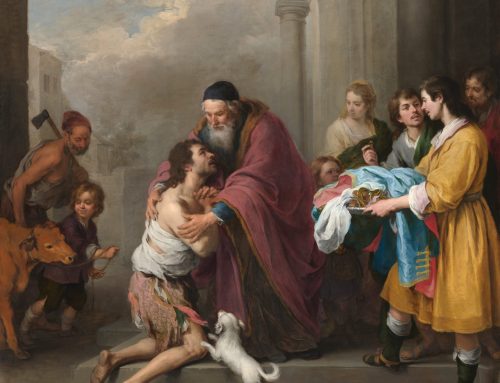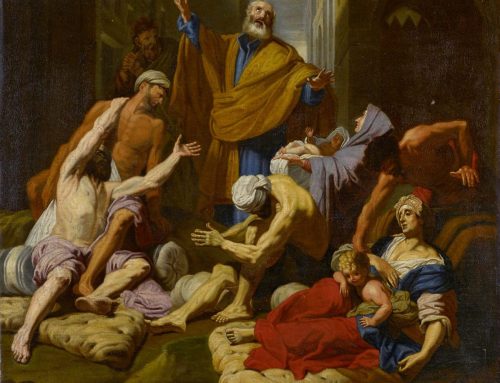
In the Gospel of St. Matthew, Jesus says, “You are Peter and upon this rock I will build my church and the gates of Hades will not prevail against it. I will give you the keys of the kingdom of heaven and whatever you bind on earth shall be bound in heaven and whatever you loose on earth shall be loosed in heaven.”[1] Christ’s words, understood with the Old Testament in mind, show that He is setting up the Church as the New Temple with Peter as the head. How do we know this? First, Peter gets a name change, indicating he will have an important role in salvation history. Second, Jesus appoints Peter to be the al ha bayit, the prime minister and keeper of the keys of the new Kingdom, the Church. Third, Jesus indicates there is a new church, a new temple, that will be built upon this “rock” that will not be overcome by the abode of the dead. Last, the binding and loosing that Jesus gives to the apostles represents teaching authority, much like the hypocritical Pharisees possessed in first century Judaism. With these four points, the Apostles and the first Christians, who were of a Jewish background, would have understood that Jesus was setting up a New Temple for a New Kingdom with a new hierarchy.
Simon’s Name Change
Many examples of persons in the Old and New Testaments show that when God calls them for a certain role in salvation history, He changes their names. We think of the following: Abram, to Abraham, Levi to Matthew, Saul to Paul, and Simon to Peter or Cephas meaning ‘rock’ in Aramaic. When Jesus changes Simon’s name as recorded in Matthew 16:16-18, we see the Son of God calling Simon to a new role in salvation history, one that is not only kingly but priestly. To understand the priestly ramifications of the new role Simon Peter will play in the new Kingdom, one must turn to the rest of the passage in Matthew, reading it in context and in light of the Old Testament.
The Keys
The keys are mentioned next in the text, and one can miss the meaning if not recalling a passage in Isaiah 22:19-22, indicating that keys are given to a person of office, a prime minister, the al ha bayit, meaning “over the house”. The person with the keys has the power to rule while the king is away. The 1st century Apostles would have understood this position in the Kingdom hierarchy. It is important to note that the al ha bayit is an office with successors, such that when one dies another takes his place; it is dynastic succession. Peter’s role was to be a father to the new kingdom of David, the heavenly kingdom as lived out through the Church. As Dr. Sri points out, “This is why the Catholic Church has always taught that Peter’s successor—the pope—serves as the ‘Vicar of Christ’ and preeminent shepherd of God’s people. As the modern-day successor of Peter and bearer of ‘the keys’, the pope stands as the current prime minister in Christ’s kingdom.”[2] Sri further teaches regarding Peter, “As the prime minister, the pope is vested with Jesus’ authority and leads God’s people in Christ’s name. And like the prime minister Eliakim, who was a father to the people in the kingdom of David, the pope leads us as our ‘Holy Father’ in the New Covenant kingdom of Jesus, the Church.”[3]
The Rock
In Matthew 16 Jesus describes Peter as the “rock,” the foundation stone of His new assembly of God, a worship place for this new Israel. Hearing this in 1st century Jewish context, ancient Jews would have known the important rock in the Temple called the eben shetiyah, the foundation stone. Ancient rabbinic writings such as the Mishnah indicate the foundation stone was a part of holy of holies within the Solomonic temple and was where the Ark of the Covenant resided. In the Herodian temple of Jesus’ time, because there was no Ark, during Yom Kippur the high priest would sprinkle the blood on the foundation stone as an atonement for sin. When Jesus says to Peter, “I will build my ekklesia upon this rock,”[4] He’s doing nothing less than describing the Church as the new Temple, a new place of worship, centered not only on Jesus but also on Peter as the foundation stone in the place where the once and for all Sacrifice would be made.
Teaching Authority
The binding and loosing that Jesus references is authoritatively teaching truths of the faith. Binding means the people must believe something and loosing means they can have differing opinions on a particular subject. In the old kingdom, the Pharisees had this power, but Jesus gives the power to Peter and the eleven, the power to bind even Pharisees in the New Kingdom, the Church. Binding and loosing can also refer to the power of forgiveness of sins. According to Dr. Feingold, “[loosing and binding] refers to the power to forgive sins and to declare the true contents of Revelation, which Christ entrusts to Peter.”[5] The Catechism states it thus, “The power to ‘bind and loose’ connotes the authority to absolve sins, to pronounce doctrinal judgements, and to make disciplinary decisions in the Church. Jesus entrusts this authority to the Church through the ministry of the apostles, and in particular through the ministry of Peter, the only one to whom He specially entrust the keys of the kingdom.”[6] Jesus leaves the Church with a priestly structure to teach the faithful in this way, showing that whatever the Church bounds on earth will have been bound in heaven.
Conclusion
Christ inaugurates the New Kingdom, which has a new Temple (both invisible and visible in time), new priests, a hierarchy, one sacrifice, feasts days, an everlasting King and Queen Mother, and many other details akin to the temple system of the Old Testament. Matthew’s Gospel is a “most astounding combination of prophesy and realization,”[7] prophecies of the Messiah, “the son of David founding an eternal kingdom that would come to rule over the Gentiles, over the ends of the earth.”[8] After 2,000 years, the Church is still locatable in history, doing what Jesus set it up to do, gather the nations to worship the Living God as He prescribed. The Church is the “salt of the earth”[9] and “light of the world”[10] that has, according to Drs. Mitch and Sri, “been transforming entire nations by enculturating the Gospel and shining the light of Christian truth into every corridor of human society and its institutions.”[11] The Catholic Church in a unique way participates in Christ’s mission by becoming the place of right worship, the genesis for evangelization and the ingathering of the nations, to worship the one true God in the New Temple.
[1]. Matt. 16:18-19 (RSVCE).
[2]. Edward Sri, Mystery of the Kingdom: On the Gospel of Matthew, (Steubenville, OH: Emmaus Road Publishing, 1999), 101.
[3]. Ibid.
[4]. Matt. 16:18 (RSVCE).
[5]. Lawrence Feingold, The Mystery of Israel and the Church. Volume 1, (St. Louis, MO: Miriam Press. 2010), 66.
[6]. Vatican, The Catechism of the Catholic Church, (Strathfield, NSW Australia. St. Paul’s Publications/Libreria Editrice Vaticana, 1994), 553.
[7]. Feingold, The Mystery of Israel and the Church, Volume 1, 67.
[8]. Ibid.
[9]. Matt. 5:13 (RSVCE).
[10]. Matt. 5:14 (RSVCE).
[11]. Mitch and Sri, The Gospel of Matthew, 27.





Leave A Comment